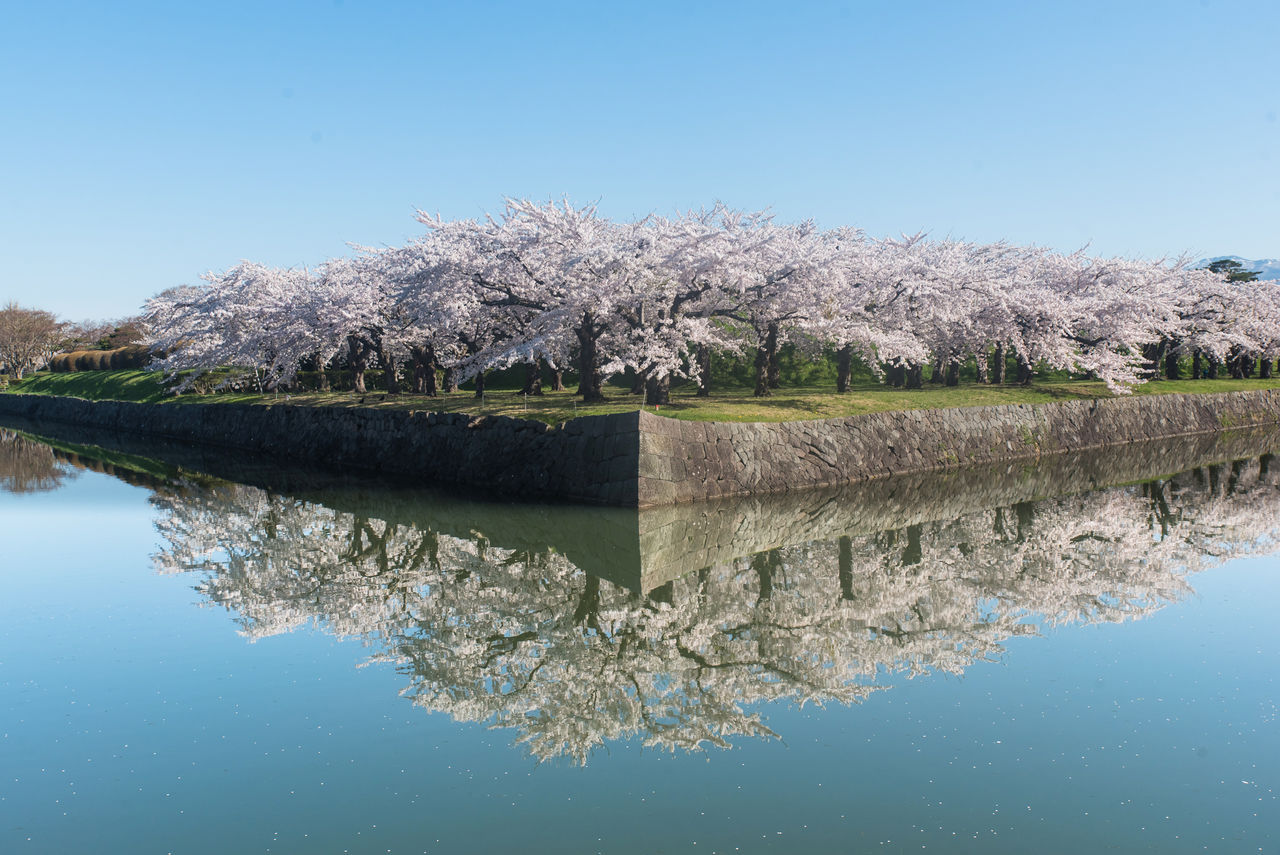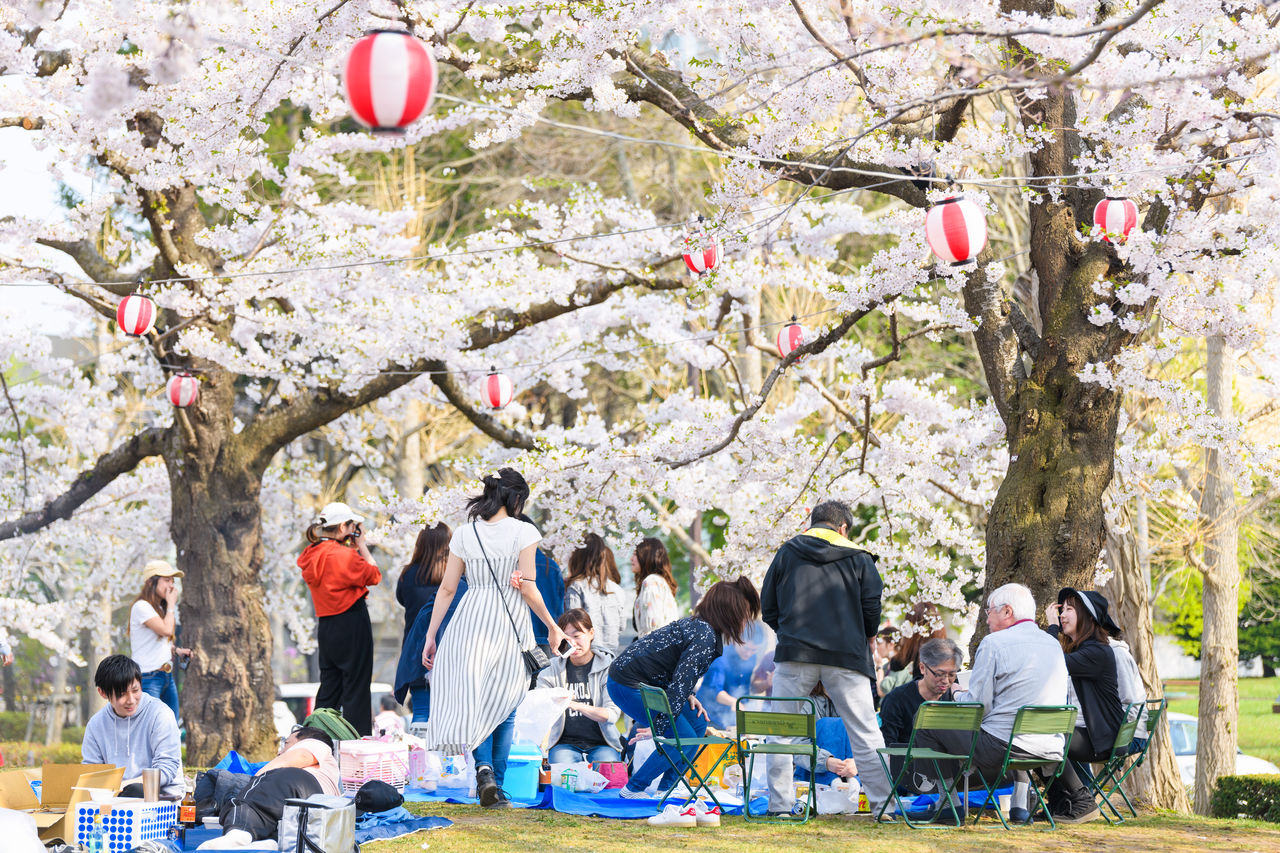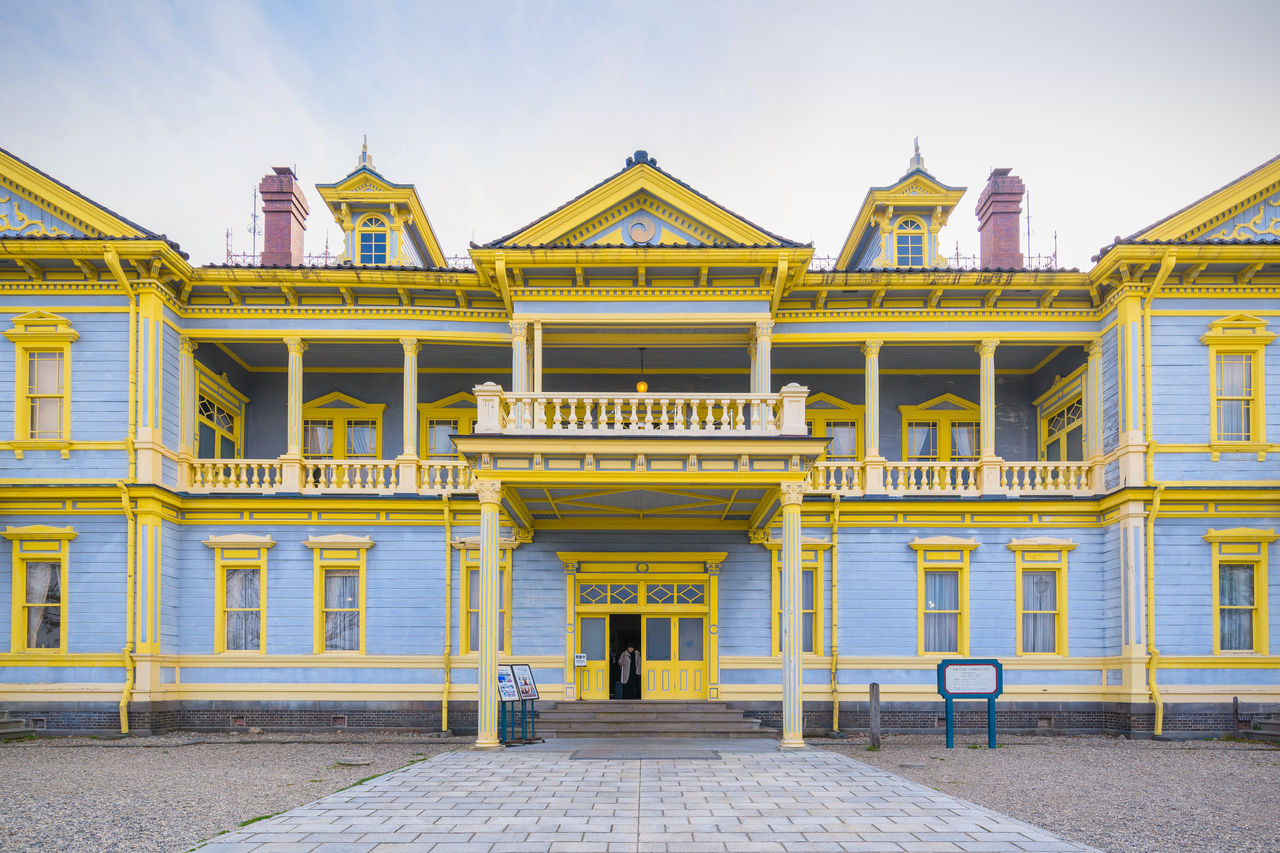
The Goryōkaku: Cherry Blossom Star of Hakodate, Hokkaidō (Video)
JapanIn video
- English
- 日本語
- 简体字
- 繁體字
- Français
- Español
- العربية
- Русский
Site of the Tokugawa Shogunate’s Last Stand
The third most populous city in Hokkaidō after Sapporo and Asahikawa, Hakodate is one of the biggest tourist destinations on Japan’s northernmost main island. The city is probably best known for the star-shaped embankment known as the Goryōkaku, a moat-encircled landmass with 1,600 cherry trees that place it high in the running for the most popular place to go flower viewing in the springtime. Usually, the flower viewing period runs from the end of April through early May. In 2018, the flowers began to bloom on April 25 and came into full bloom around the end of the month.
 Rows of cherry trees line the Goryōkaku embankments.
Rows of cherry trees line the Goryōkaku embankments.
The Goryōkaku, whose construction was completed in 1864, was originally conceived as Hakodate’s government office. Commodore Matthew Perry’s US mission to Japan—still in the midst of a self-imposed national isolation from Western countries—reached the country in March 1853, resulting in the two nations entering into the Kanagawa Treaty in the following year. In addition to guaranteeing the safety of US sailors shipwrecked on Japan’s shores, the treaty also opened up the ports of Shimoda on the Izu peninsula and Hakodate in Hokkaidō (known as Ezo at the time).
The government office in Hakodate at the time, situated at the foot of Mount Hakodate, was deemed insufficient to handle matters of international diplomacy and national defense. This led to the construction of the Goryōkaku, modelled after the walled fortress cities of Europe. Just five years after the completion of the new facility, though, the Tokugawa shogunate met its demise during the Boshin War, which ended in 1869.
 The after-hours view of Hakodate is considered one of the top three nightscapes in the country
The after-hours view of Hakodate is considered one of the top three nightscapes in the country
The Goryōkaku was actually the site of a battle between the shogunate and the newly established Meiji government during the Boshin War. After Edo Castle capitulated with no bloodshed, the remnants of the Tokugawa regime’s army made their way north while battling with the new government’s troops, eventually establishing a base at the Goryōkaku. However, the shogunate’s army finally succumbed to the Meiji forces in 1869 at the Battle of Hakodate, handing over the fort after fighting subsided.
 The Old Hakodate Magistrate’s Office was restored and reopened on the Goryōkaku grounds in 2010.
The Old Hakodate Magistrate’s Office was restored and reopened on the Goryōkaku grounds in 2010.
In 1914, at the request of the citizens of Hakodate, the Goryōkaku was converted into a public park. Over the next 10 years, the Hakodate Mainichi Shimbun, a local newspaper, planted more than 10,000 somei yoshino cherry trees within its grounds, helping it to become one of Hokkaidō’s most beloved blossom viewing spots. With around 1,600 cherry trees remaining, today the Goryōkaku serves as the regional benchmark for officially announcing that the cherries have come into bloom each year.
 A beautiful mirror image of cherry trees seen from across the moat.
A beautiful mirror image of cherry trees seen from across the moat.
Breathtaking Tower Views of the “Pink Star”
While the fort’s “sakura tunnel” and the view from across the moat of the trees reflected in the water are certainly worth checking out, one spot visitors should definitely visit is Goryōkaku Tower, which offers views overlooking the ocean of pink blossoms from up high.
 Admire the rows of lovely cherry trees as you walk toward Goryōkaku Tower
Admire the rows of lovely cherry trees as you walk toward Goryōkaku Tower
Goryōkaku Tower was originally built in 1964 to commemorate the 100th anniversary of the fort. In 2006, the original 60-meter tower was dismantled and rebuilt. Now standing 107 meters tall, the tower houses two viewing platforms, one at 86 meters high and the second at 90 meters, affording an excellent view of both the city and the nearby Mount Hakodate and Tsugaru Strait, not to mention the starlike shape of the Goryōkaku itself.
 A springtime view of the Goryōkaku from the viewing platform, the star-shaped fort bathed in pink.
A springtime view of the Goryōkaku from the viewing platform, the star-shaped fort bathed in pink.
The view of the fort during sakura season sees cherry trees both on the island and surrounding it bathing the whole area pink. Other activities popular with tourists coming to see the cherry trees are viewing the trees lit up at night, as well as climbing the tower just before it closes for the day to see the setting sun.
 The former battleground is now a popular place for locals and visitors to picnic and relax.
The former battleground is now a popular place for locals and visitors to picnic and relax.
Nearby Attractions: Motomachi and the Bay Area
As Hakodate was one of the first ports opened to the West, the city is renowned for its many historic buildings heavily influenced by Western architecture. Popular destinations include the Old Public Hall of Hakodate Ward, located in Motomachi at the foot of Mount Hakodate; the former British consulate, home to a cafe and a museum tracing the history of the port town’s relationship with Western nations; and the Hakodate Motomachi Catholic Church, built in the style of a twelfth-century gothic cathedral.
 The Old Public Hall of Hakodate Ward is a symbol of the city’s Motomachi district.
The Old Public Hall of Hakodate Ward is a symbol of the city’s Motomachi district.
 The bell tower of the Hakodate Motomachi Catholic Church peeps over nearby cherry blossoms.
The bell tower of the Hakodate Motomachi Catholic Church peeps over nearby cherry blossoms.
One aspect of Hakodate that has recently gained attention thanks to being mentioned in Michelin’s Green Guide to Japan is a walking path around the city’s bay area. Of particular interest on this path is the Kanemori Red Brick Warehouse, constructed in 1887 and transformed into a shopping mall in 1988. The Bay Hakodate mall, located adjacent to the warehouse, offers even more shopping and dining choices for those looking to make the most of their visit.
 The Kanemori Red Brick Warehouse area at night.
The Kanemori Red Brick Warehouse area at night.
DATA
Goryōkaku Park
- Location: Goryōkakuchō 44, Hakodate, Hokkaidō
- Access: 15 minutes’ walk from Goryōkaku Kōen Mae stop on Hakodate city tram, 10 minutes’ walk from Goryōkaku Kōen Iriguchi stop via Hakodate Bus
- Opening hours: Area surrounding moat open 24 hours a day; Area inside moat open 5 am to 7 pm from April through October, 5 am to 6 pm from November through March
Goryōkaku Tower
- Location: Goryōkakuchō 43-9, Hakodate,Hokkaidō
- Access: 16 minutes’ walk from Goryōkaku Kōen Mae stop on Hakodate city tram; 7 minutes’ walk from Goryōkaku Kōen Iriguchi stop via Hakodate Bus
- Opening hours: 8:00 am to 7:00 pm (April 21–October 20), 9:00 am to 6:00 pm (October 21–April 20); special hours to view year’s first sunrise on January 1
- Viewing platform admission: Adults ¥900, junior high and high school students ¥680, elementary school students ¥450 (special discounts available for groups and disabled persons)
(Text, photos, and video by Laufen Katsu.)